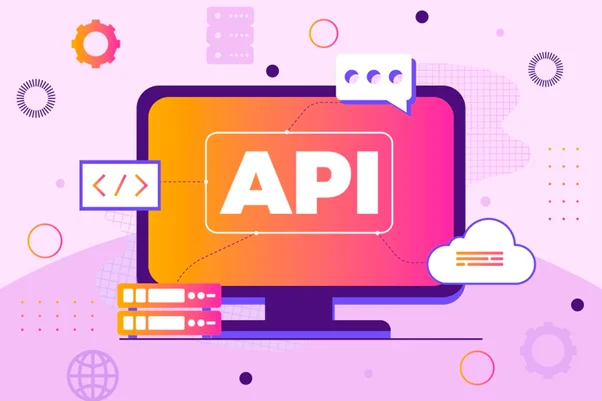Beyond Functionality: API Testing for User Satisfaction

Have you ever wondered how your apps perform the great things they do?
When you use a food delivery service or pay with your phone APIs (Application Programming Interfaces) are responsible for this.
APIs have evolved into the backbone of modern systems, allowing for the smooth interaction of various software components.
While API development has traditionally prioritized functionality, ensuring user satisfaction extends beyond functionality.
APIs’ complexity necessitates a professional approach. Over 90% of developers are testing or intend to test their APIs. This is where API testing services may help.
They assist businesses in launching high-quality products by ensuring that the integrated APIs fulfill industry requirements for functionality, dependability, performance, and security.
What is API Testing?
API testing is evaluating the interface of a software application that allows other programs to communicate and share data.
The primary purpose is to ensure that API operates properly regarding functionality, security, performance, and dependability.
These tests can be run by interacting directly with the API or as part of broader integration testing.
An API is a link that allows information to flow freely between different software programs. A typical application structure has numerous layers, including the API layer.
This layer focuses on the application’s basic functionality. This specifies how requests are made, the production methods, and the exact data types utilized.
In contrast to user experience (UX) testing, which focuses on how user-friendly an application is. API testing examines the application’s core logic, security measures, and data replies.
API testing often entails initiating requests to one or more API endpoints and then comparing the actual replies to predefined expected outcomes.
Input-output validation is an important part of API testing. Test cases are built to ensure that the API answers reliably and appropriately cover a variety of scenarios.
These include valid inputs, invalid inputs, boundary cases, and edge cases. It entails creating requests with various parameters and payloads and evaluating the responses against the expected results.
Another major focus area in API testing is security. Testers determine whether the API uses appropriate authentication and permission procedures.
They also check for SQL injection, cross-site scripting (XSS), and data disclosure via APIs.
Testers assist in identifying and correcting vulnerabilities before they are exploited by malicious users by simulating potential security breaches.
The API’s performance is measured by how well it operates under various loads and stress levels. Response times, throughput, and resource use are all measured.
Performance testing reveals bottlenecks, latency concerns, and potential areas for optimization, guaranteeing that the API can manage the expected user traffic without slowing down.
Reliability testing is running the API for extended periods of time to detect memory leaks, resource fatigue, and unexpected crashes. This aids in identifying concerns with long-term usage and stability.

API Testing Varieties
API testing is divided into numerous forms, each of which plays an important role in guaranteeing the quality, stability, and security of software systems.
Here’s a rundown of the various forms of testing:
API Performance Testing
API performance testing’s primary purpose is to assess an API’s responsiveness and overall system performance under particular scenarios.
Functional tests, for example, confirm that the API generates the anticipated output for a given input. Load tests are also performed to evaluate the API’s performance under various load levels.
Read Also: What are End-to-End E-Commerce Solutions?
API Testing Automation
API automation testing entails the development of scripts, tools, or applications that can test APIs systematically and regularly.
Automation facilitates the testing process by allowing for more frequent and efficient testing cycles.
API Security Evaluation
API security testing is essential in ensuring that APIs meet high-security requirements.
This form of testing verifies numerous security components such as authentication mechanisms, permissions, and access controls.
API Integration Evaluation
API integration testing is intended to detect and correct mistakes early in the development process.
This testing method uncovers issues relating to functionality, reliability, performance, and security by testing the integration of APIs.
Significance of API Testing
API software comprises functions, classes, or subprograms that allow different pieces of software to communicate with one another.
It is essential to validate API efficiency across several devices, browsers, and operating systems while performing API testing. Here is the rundown of API testing’s significance for you to check:
Predicting Real User Experience: By evaluating APIs from the user’s perspective, you can identify flaws that may harm their experience. This results in fewer impacts and more satisfied users.
Performance Testing Under Stress: Users do not utilize apps one at a time. Sometimes they all come at once.
API testing allows you to examine how your app performs when everyone is using it, ensuring that it does not crash or slow down.
Error Handling: Users dislike when things go wrong. Testing from the perspective of a user allows you to learn how your app reacts to errors. This allows you to fix mistakes before users notice them.
Smooth Third-Party Integrations: If your app relies on third-party services (such as maps or payment gateways), it must perform flawlessly with those services.
User-centric API testing ensures that everything runs smoothly and provides a consistent experience.
Read Also: How to Clear the Cache on Android?
Wrapping Up
While functional testing is the cornerstone of API quality assurance, the new digital landscape necessitates a broader approach.
Businesses may ensure that APIs function properly and improve user experiences by testing performance, security, and usability.
In a tech-focused environment, APIs are more than just components; they are the roads to satisfied users. So, utilize API testing for developing apps that genuinely satisfy your users.





